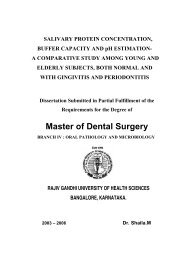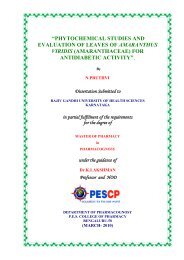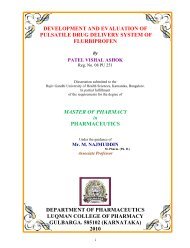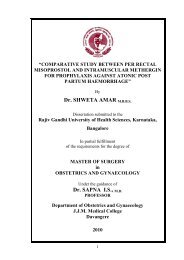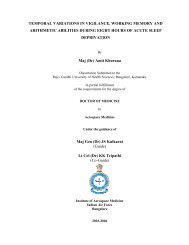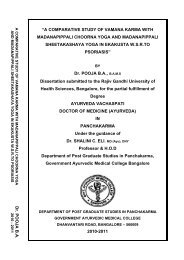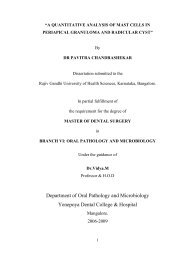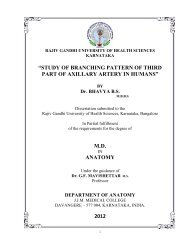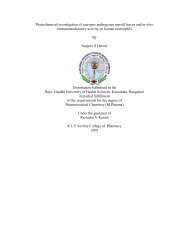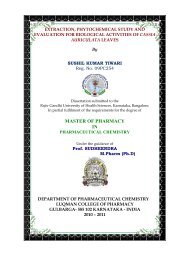Kalabhavi Srinivas K.pdf
Kalabhavi Srinivas K.pdf
Kalabhavi Srinivas K.pdf
You also want an ePaper? Increase the reach of your titles
YUMPU automatically turns print PDFs into web optimized ePapers that Google loves.
2. Extrinsic causes:<br />
Proforma<br />
An aberrant, accessory, or early branching lower pole vessel is the most<br />
common cause of extrinsic UPJ obstruction. This is a major case of UPJ obstruction<br />
in adults.<br />
These vessels pass anteriorly to the UPJ or proximal ureter and contribute to<br />
mechanical obstruction. Nixon (1953) reported that 25 of 78 cases of UPJ<br />
obstruction were secondary to vascular compression. Other reported incidences have<br />
varied between 15% and 52% (Ericsson et al, 1961; Williams and Kenawi, 1976,<br />
Johnson et al, 1977; Stephens, 1982; Lowe and Marshall, 1984). Whether the<br />
aberrant vessel causes obstruction or is a co-variable that exists along with an<br />
intrinsic narrowing is unclear.<br />
Stephens (1982) theorized that when an aberrant or accessory renal artery to<br />
the lower pole of the kidney is present and the ureter courses behind it, the ureter may<br />
angulate at both the UPJ and the point at which it traverses over the vessel as the<br />
pelvis fills and bulges inferiorly. Further angulations of the ureter occurs as it<br />
becomes adherent to the UPJ secondary to an inflammatory process. A two-point<br />
obstruction ensues, with kinking of the ureter at the UPJ and at the point where the<br />
ureter drapes over the vessel. Stephens (1982) could find no evidence of stricture or<br />
fibrosis at these points when the ureter was freed of its adhesions and lifted off the<br />
vessel. However, he suggested that over time, these areas may become ischemic,<br />
fibrotic, and finally stenotic 16 .



